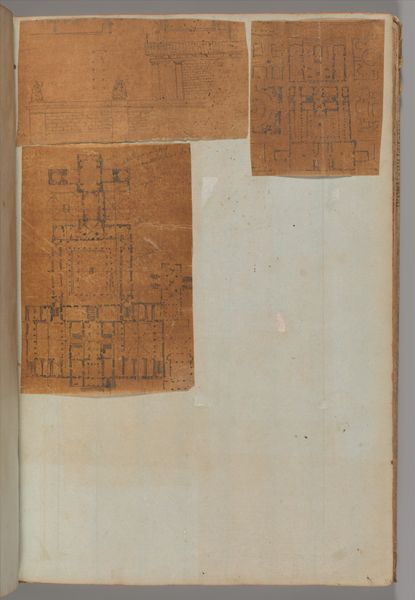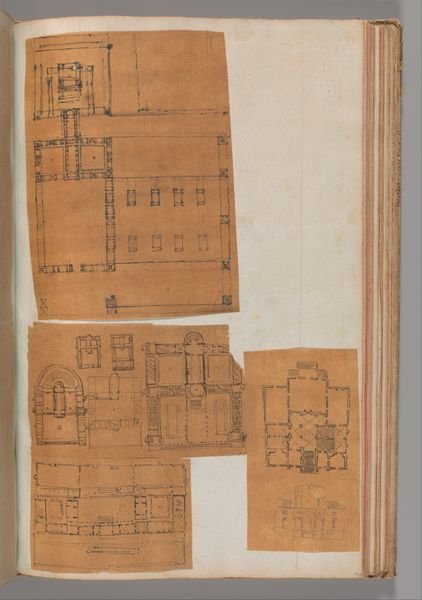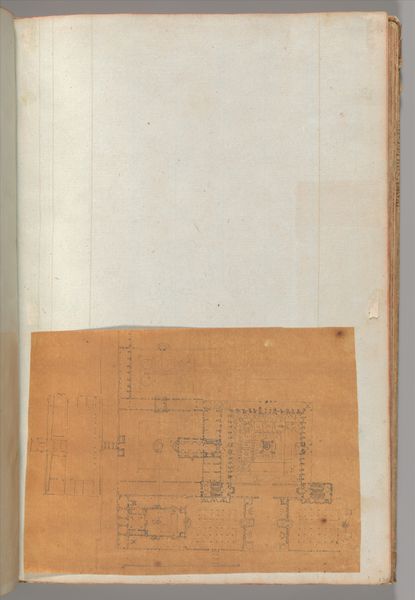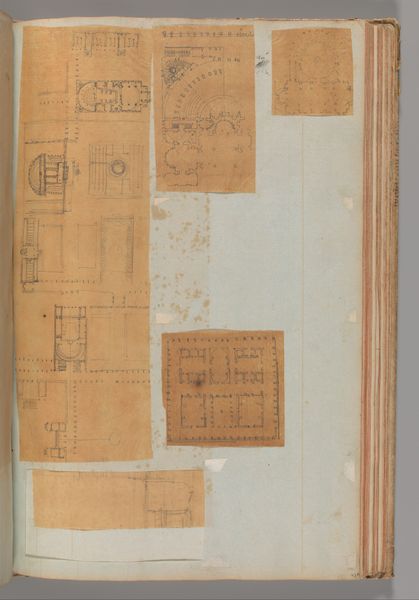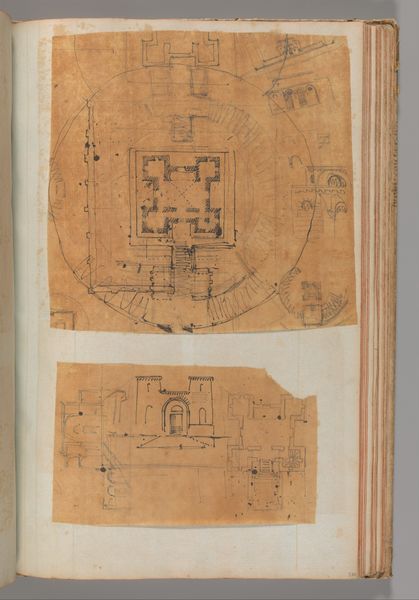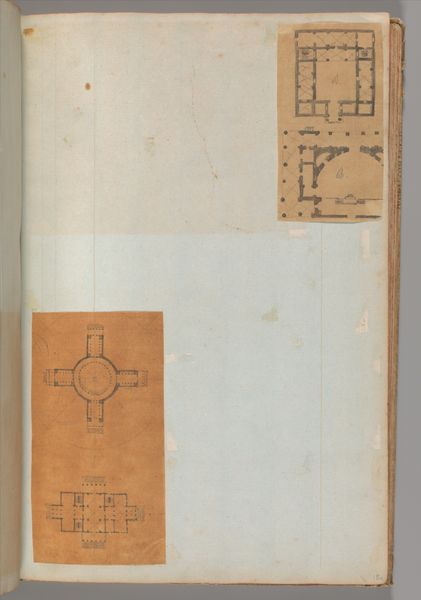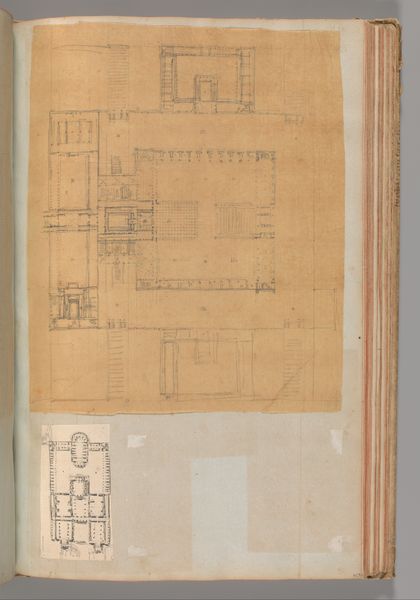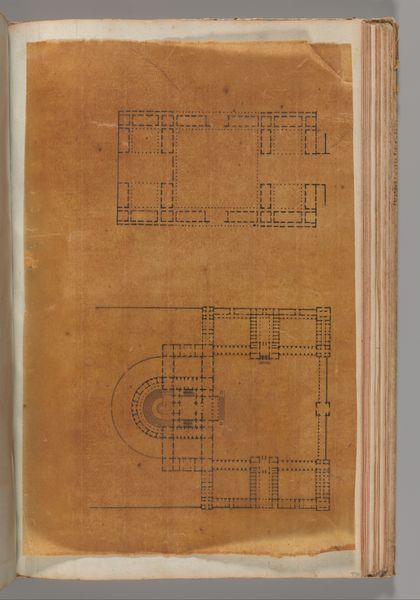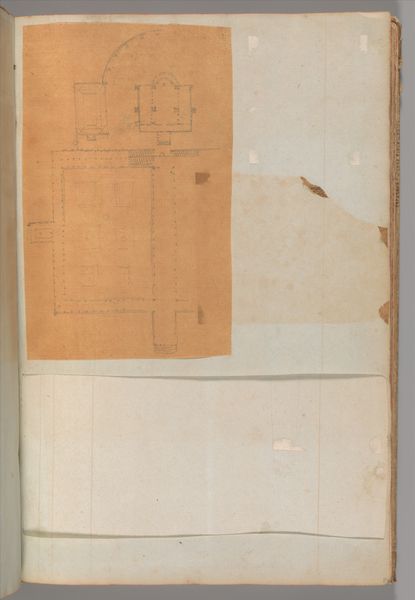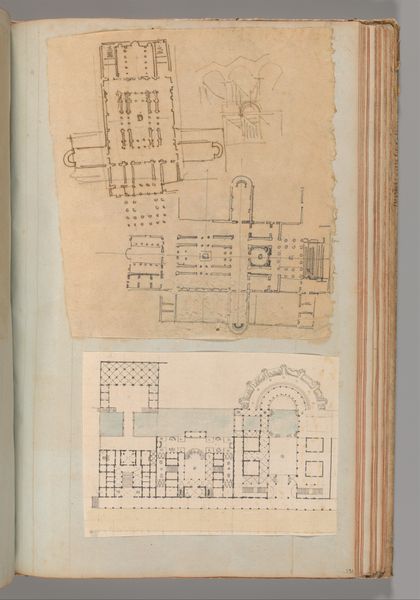
Page from a Scrapbook containing Drawings and Several Prints of Architecture, Interiors, Furniture and Other Objects 1795 - 1805
0:00
0:00
drawing, print, paper, pencil, architecture
#
drawing
#
neoclacissism
# print
#
paper
#
geometric
#
pencil
#
architecture
Dimensions: 15 11/16 x 10 in. (39.8 x 25.4 cm)
Copyright: Public Domain
Curator: This is a page from a scrapbook containing architectural drawings and prints, created by Charles Percier between 1795 and 1805. Look at the materials – paper, pencil, and printmaking. It's interesting to see these elements combined in one place, a testament to Percier’s multidisciplinary approach. Editor: It has an unfinished feel. Linear, geometric. And the monochromatic tones create this delicate yet structured image. Curator: Precisely! As a leading figure in the Neoclassical movement, Percier was extremely influential in interior design and architecture, advocating for the principles of order and classical design in response to revolutionary tastes. The format suggests this isn’t just an individual artwork, but rather a reference tool – a compendium of visual ideas. It shows the movement of labor, from the conceptualization in sketch, to mass reproducibility with print, contained within this personal resource of the scrapbook. Editor: It's so visually organized, broken into components—hallways, rotundas, rooms. The attention to the geometric details is quite arresting, offering a window into architectural thought. And this, for me, evokes those philosophical roots present within Neoclassicism. Curator: The act of assembling this scrapbook itself can be read as a commentary on labor and production. These prints would be products of external workshops—Percier collates them and potentially uses them as an inspiration for new designs. He almost becomes a proto-curator, controlling the access, production, and visual distribution of design ideas. Editor: So, the overall design evokes, for me, this push and pull of light and shadow, this tension between form and void, echoing Neoclassicism's inherent contrasts of order and, on the other hand, a romantic appeal to nature. Curator: What’s left unsaid here interests me; for example, understanding Percier’s target audience. These would not be sketches for all, but mainly for a select group of artisan classes whose workshops depended on his new design schemas. Editor: Ultimately, whether draft or record, these clean lines serve their function. These shapes communicate ideas that become buildings and environments. The very lines offer not only form, but also vision. Curator: And it highlights this notion of visual dissemination to working-class tradespeople. It’s more than form – it becomes a language for production.
Comments
No comments
Be the first to comment and join the conversation on the ultimate creative platform.

